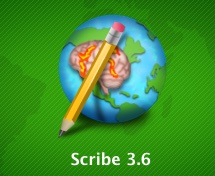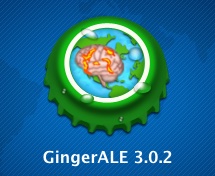Conditions
Conditions are the set of experiences or tasks the subjects undergo. This includes coding the stimuli presented, the responses performed (if any), the instructions given, and any external variables collected.
Conditions are only a part of functional papers. The subjects in structural papers do not undergo conditions, but instead have solely anatomical images.
For sparsely coded functional papers, only the condition name and external variables are coded.
For studies with multiple time-dependent stimuli, response or instructions, the coding order should match the order within the condition. For example, stimuli presented first should be first in the stimulus list.
Condition Name: Use the same naming system as described in the prose description. Again, try to keep the naming convention of the paper, but use your best judgment. Sometimes authors can be confusing and will invent a very long condition name for a simple task. If, in the interest of brevity, it is necessary to formulate your own condition names, then do so.
Condition Description: This description is for summarizing or clarifying information that pertains to the condition as a whole and cannot be broken into stimulus, response or instructions.
Stimulus
Stimulus Modality: The broad sensory mechanism through which the subject was stimulated. The stimulus modality can be Auditory, Gustatory, Interoceptive, Olfactory, Tactile, Visual and None.
Stimulus Type: Stimulus type is a more specific description, including Music, Shapes, Faces, Words and Air Puff. If none of the choices match the stimuli, additional stimulus types can be added.
Stimulus Laterality: Stimlulus laterality
Stimulus Short Description: Any additional details about the stimulus that are necessary for a firm understanding of the paper or that add interest to the study. This might include information about the exact type of stimulus not apparent from the "Stimulus Type" selected, for example, "Angry Faces" or "Spanish Nouns".
Overt Response
Overt Response should only code explicit, measurable responses. It does not include covert responses, such has imagined movement or silent word generation.
Overt Response Modality: Response modality is the broad mechanism through which the subjects respond. Response modalities can be Arm, Foot, Hand, Leg, Ocular, Oral/Facial, Pelvis, Shoulder, Torso, Wrist, Other or None.
For example, a button press should use "Hand" for the modality (unless a different modality is discussed in the paper). The modality of "Ocular" should be used for studies focusing on saccades or eye movement only, not anything visual.
Overt Response Type: Response type describes the more specific response type used by the subjects. Examples of response type include Blink, Button Press, Breath Hold, Point and Smile.
Overt Response Laterality: Overt Response Laterality
Response Short Description: Any additional details about the response that are truly necessary for a firm understanding of the study should be saved in this description.
Instructions
Instruction: Describes the instructions given to the subjects in the study.
Be careful not to use a response as an instruction. For example:
- If a subject was instructed to read words aloud, choose "Read" as the instruction and "Speech" as the subject's response; rather than choosing "Speak" as the instruction.
- If the instructions were to attend and then press a button upon perceiving a target, "Attend" is the proper instruction to be coded, not "Button Press".
"Attend" is intended for studies where it is the only instruction given to subjects. Otherwise it would be coded in every paper.
Do not confuse "detect" and "discriminate". For example:
- Detect is to discover the presence of, i.e., does target exist?
- Discriminate is to distinguish between objects by noticing differences, i.e., choosing a particular target.
Instruction Short Description: This field contains any additional details about instructions that are necessary for a firm understanding of the study. If possible, the description should use be complete sentences to describe the instructions in the past tense. For example: "Subjects generated verbs in response to the presented nouns."
External Variable
External Variable: An external variable is any non-imaging measurement taken during the scan, e.g., blood pressure, heart rate, temperature, stuttering rate, etc. In order to be included, the external variable must be specifically stated in the study.
About half of the experiments currently in the database do not use an external variable. Of the experiments that do, the most commonly recorded measurements were response accuracy and reaction time.
This example (from Uncapher, Journal of Neurology, 2005) should serve as a guide for how an external variable should be documented in the condition:
- Accuracy/Reaction Time: EVs were measured and was correlated with delay-specific encoding-related activity. Delay-selective subsequent memory effects associated with recollection and familiarity were found
And how it should be documented in the contrast description:
- External Variable: Accuracy and reaction times across recognition tests at both 30 min and 48 hours were measured and were then used to identify delay-invariant and delay-sensitive subsequent memory effects associated with familiarity (know responses) and recollection (a remembered response)
In most instances one of the following scenarios will pertain:
- EV was measured, but not used. For example, EEG is often measured to ensure activation is task-related.
- EV was measured and used to drive analysis (i.e., correlating performance, response rate, etc. with an image).
- EV was measured and used to clarify results (i.e., behavioral analysis used to clarify neuroimaging findings).


